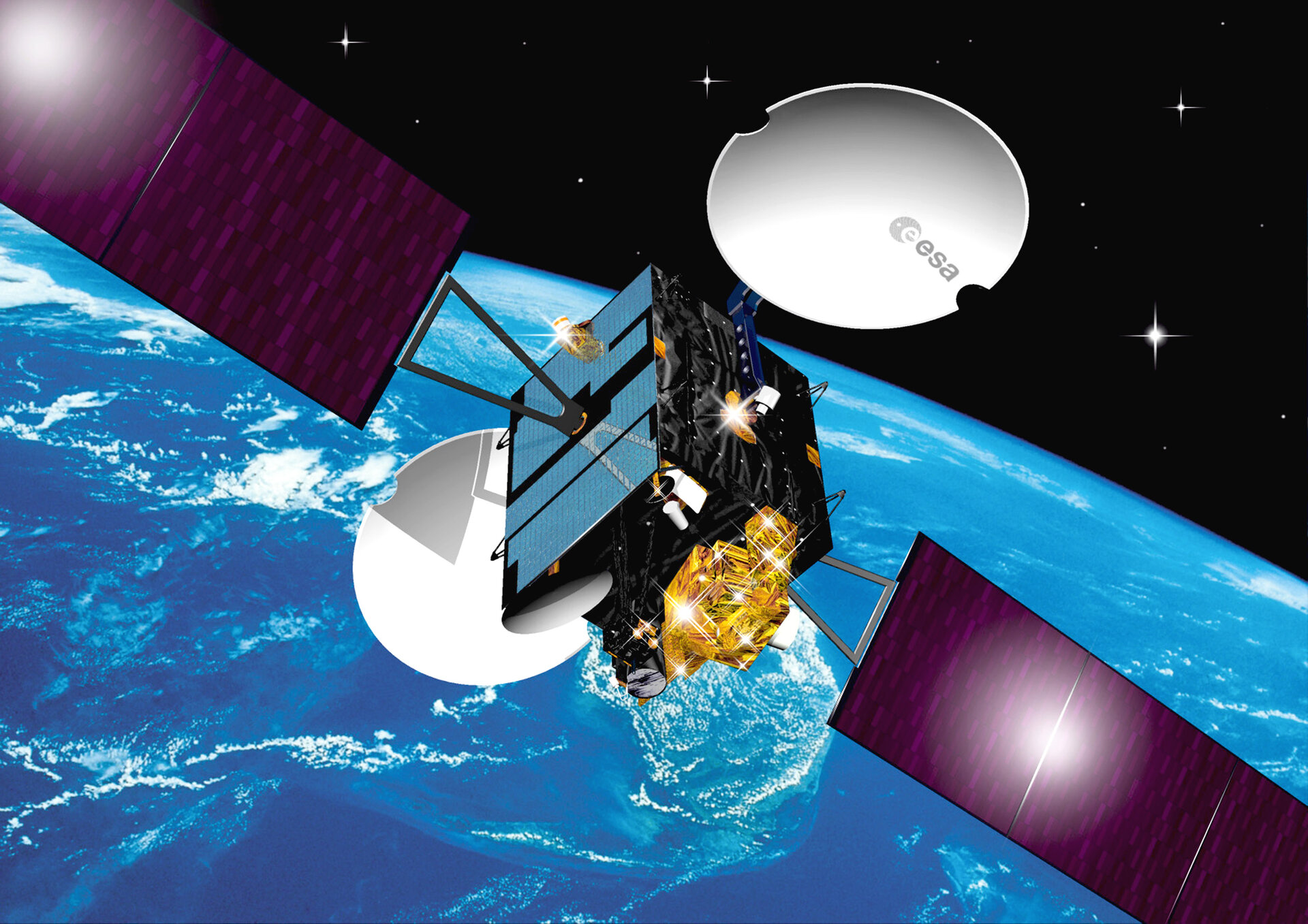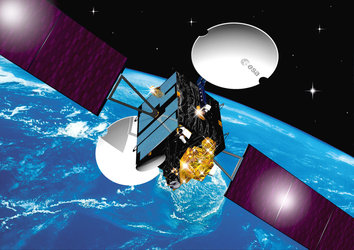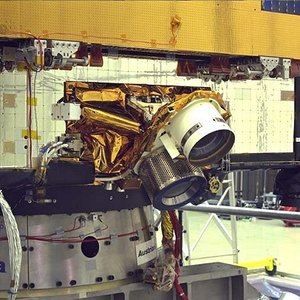Artemis recovery operation continuing successfully
ESA PR 44-2001. Ground control in Fucino, Italy - the operations team and system engineers of the Altel (Alenia Spazio-Telespazio) consortium, supported by ESA specialists - reports that since last night (Tuesday 24 July) ESA's Artemis satellite has been successfully positioned in its circular parking orbit at about 31000 km.
The satellite, launched from Kourou by an Ariane 5 on Thursday 12 July, had been put into the wrong orbit due to a malfunction on the launcher's upper stage. The injection orbit had a perigee of 590 km, an apogee of 17487 km and an inclination of 2.94°, compared to expected values of 858 km, 35853 km and 2° respectively.
Since injection into orbit, the spacecraft's behaviour has been nominal, allowing ESA to rapidly adopt a recovery strategy that aims to take the satellite to a nominal geostationary position of approximately 36000 km, maximising the lifetime of the spacecraft originally planned to last ten years.
The strategy consists of four steps, the first two of which have been successfully completed.
Under step 1 (18 to 20 July), the apogee boost motor (chemical propulsion) was fired during five perigee (shortest distance from Earth) passes to increase the apogee (maximum distance) to about 31000 km, without significant changes to the perigee.
Under step 2 (22 to 24 July), the elliptical orbit was circularised by three consecutive motor burns. This resulted in a circular parking orbit with the satellite at approximately 31000 km, an orbit duration of about 20 hours and an inclination of 0.8°. On completion of this step, the solar arrays were fully deployed, as were the two antenna reflectors.
As of today, the satellite is operating in quasi-nominal mode fully under the control of the ESA/Alenia Spazio-Telespazio team, pointing at the Earth and with the solar panels tracking the sun, while not yet in geostationary orbit. Under current step 3 with the satellite in parking orbit, new unforeseen but now required control modes for orbit-raising using ion engine propulsion will have to be patched (by software uploads) and commissioned. The ion engines themselves will then be initialised and checked out.
Under step 4 (expected to start late September and last several months), the satellite will be "spiralled" from parking to nominal geostationary orbit using its novel electrical ion-propulsion system. Spacecraft commissioning (activation and checking that all items are operating correctly) will proceed subsequently. These operations, which are common to all satellites at the beginning of their lifetime, will last a further couple of months.
The recovery operation involves a certain number of unusual activities which could not all be planned for in advance. In particular, the ion propulsion system - originally to be used only for controlling the inclination of the spacecraft throughout its lifetime - will be operated in a new mode.
The on-board supply of propellant remaining after the orbit raising manoeuvres, i.e. chemical and xenon (the gas used for the electrical ion-propulsion system), should make possible a meaningful technology mission in geostationary orbit, assuming proper operation in new modes both in parking orbit and during ion-engine orbit-raising manoeuvres.
The next progress update will be released with the start of step 4 operations, presently scheduled for late September.
For further information, please contact:
ESA Media Relations
Franco Bonacina
Tel:+33.(0)1.5369.7713









